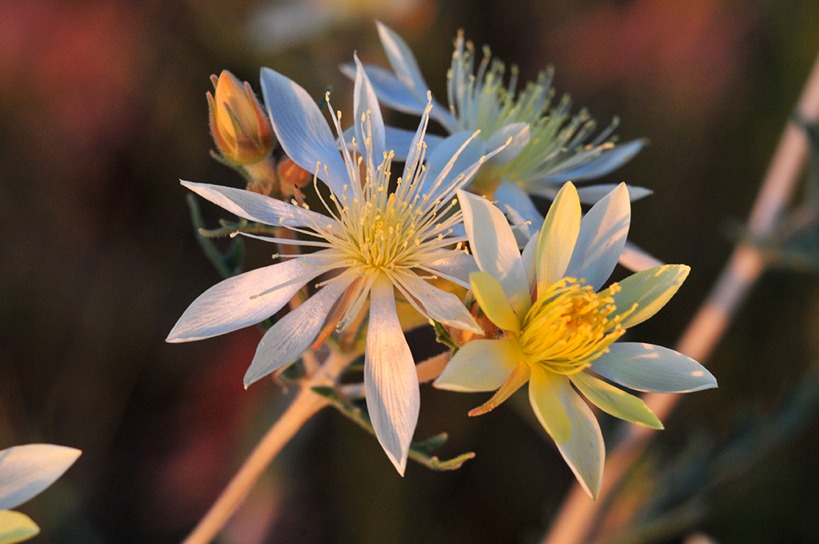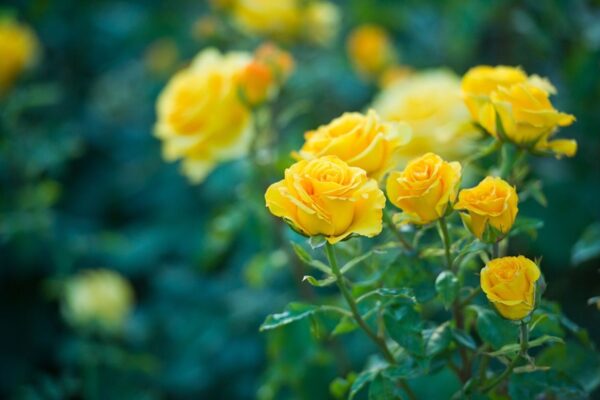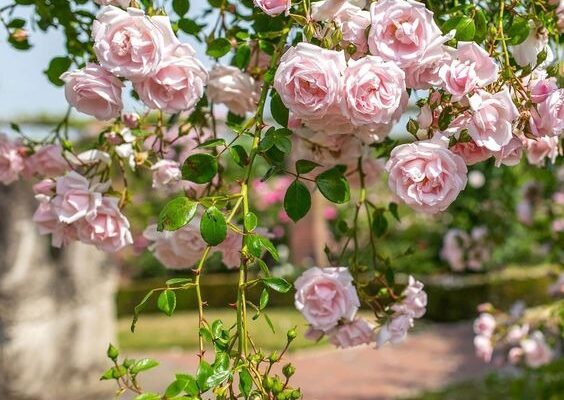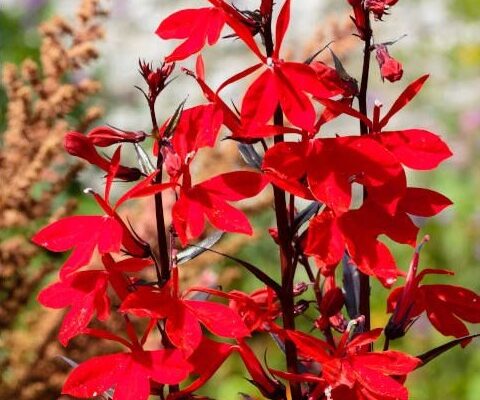The Magic of Night-Blooming Flowers
Flowering plants are not just restricted to daytime hours as incorporating plants that produce flowers after dusk can add a new dimension to your outdoor space. It would be an excellent idea to select plants that perform their best during your leisure time, so that you can fully appreciate their beauty.
Night-blooming flowers are not only visually appealing but often emit a lovely fragrance, which can create a naturally sweet-smelling ambiance in your garden. To enhance your outdoor living experience, consider creating a moon garden – a garden that is designed to be enjoyed in the evening, filled with flowers that bloom well into the night.
Night-blooming flowers are plants that produce flowers that open in the evening or at night and close during the day. These flowers are also called nocturnal flowers and they have evolved to attract pollinators that are active during the night, such as moths, bats, and some species of bees. Night-blooming flowers come in many different shapes, sizes, and colors and they can be found in various parts of the world. Some examples of night-blooming flowers include moonflowers, evening primroses, jasmine, and night-blooming cereus.
Night-blooming flowers have a unique charm and beauty that makes them popular among gardeners and flower enthusiasts. Some night-blooming flowers are also fragrant, releasing their scent into the night air. They are often grown in gardens and containers, and many people enjoy sitting outside at night to watch them bloom. In addition to their aesthetic value, many night-blooming flowers are used in traditional medicine and as herbal remedies. Some have also been the subject of myths and legends, adding to their allure.
To ensure the best growth and adaptability to your environment, it is recommended that you select plants native to your region when creating your moonlight garden.
Below are 15 stunning flowering plants that can be grown in a moon garden.
1. Evening Primrose
At dusk, the evening primrose unfurls its bright yellow petals, creating a stunning sight that lasts until midday the next day. This perennial plant grows as a biennial, developing only leaves in its first year before blossoming with striking flowers in its second year. These showy flowers, which measure around one to two inches in size, release a delightful lemon fragrance and can be observed from summer to fall.
Aside from being visually appealing, the common evening primrose is a popular choice for attracting butterflies, moths, and bees to your garden. Additionally, the seeds produced during the fall months provide a vital food source for birds, making it an excellent choice for wildlife enthusiasts.
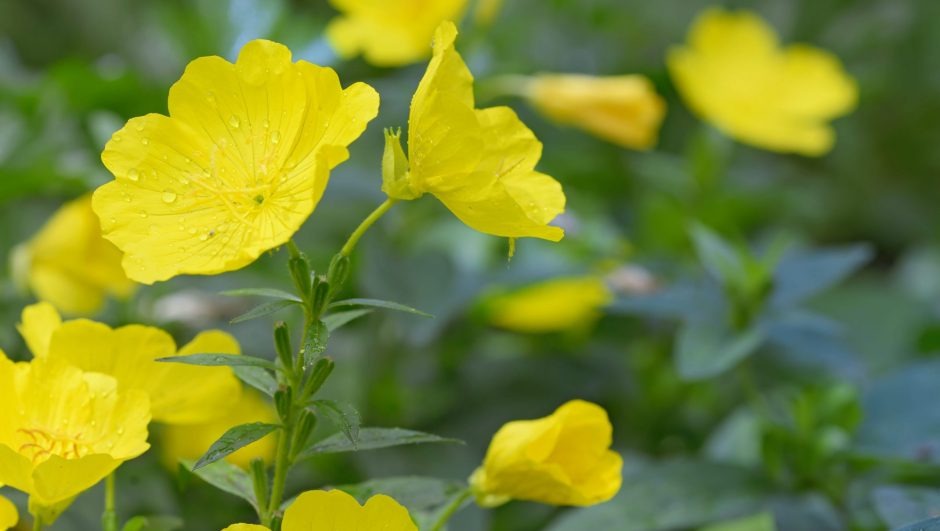
2. Tuberose
Tuberose is a highly fragrant Night-blooming annual bulb that is perfect for planting near entryways or outdoor spaces where the sweet aroma can be best enjoyed. These plants typically grow to be two to three feet tall, boasting long green stems and leaves, and producing clusters of small white flowers.
To ensure that you have a beautiful display of tuberose flowers, it’s best to plant the bulbs during the spring season. The flowering period occurs from mid to late summer, although this may vary depending on the location of the garden. After the first frost of the year, it’s recommended that the bulbs are dug up and stored in a cool and dry area until the following spring when it’s time to replant them again.
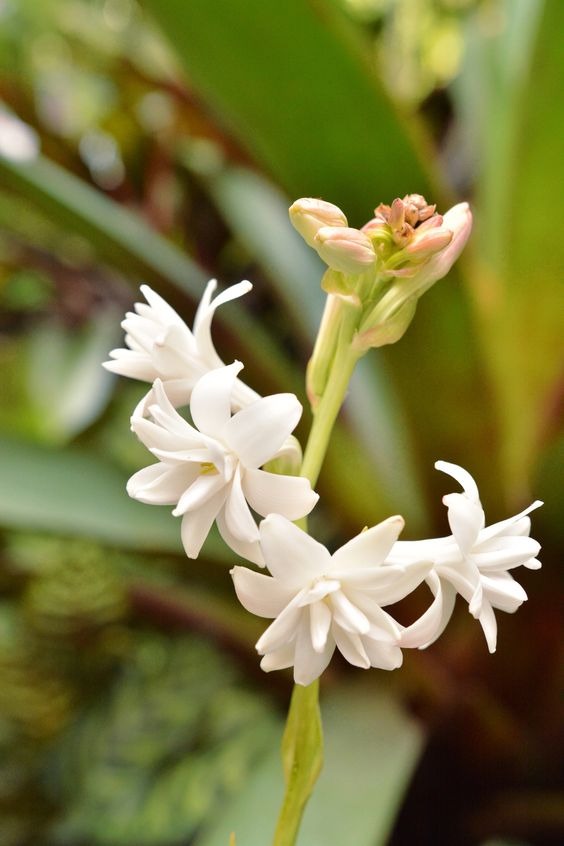
3. Flowering Tobacco
Flowering tobacco plants are a vibrant addition to any moonlit garden, displaying an array of colorful blooms in shades of red, pink, green, yellow, and white. These plants, which can reach heights of three to five feet, are known for their small flowers that bloom exclusively at night, providing a source of nectar for moths seeking food during the evening hours.
Originating from South America, flowering tobacco is classified as a perennial plant in zones 10 and 11, where the warmer climate allows it to thrive year-round. However, in northern regions, it’s typically grown as an annual due to the colder climate.
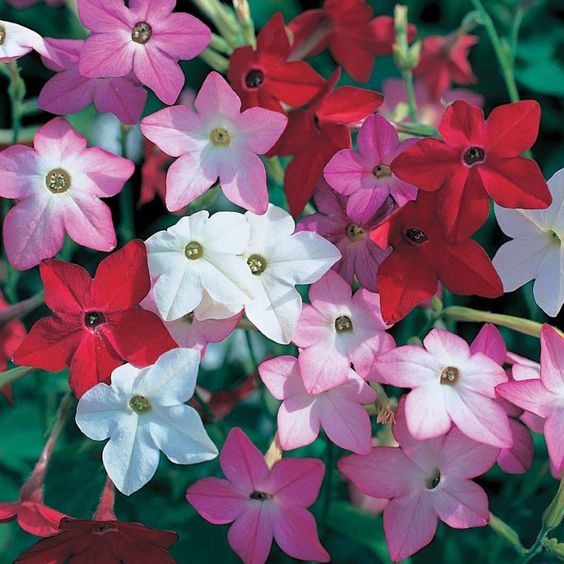
4. Casa Blanca Lily
When it comes to creating an enchanting moon garden, the Casa Blanca lily is a must-have with its striking and sizable blooms. As a mature plant, it can grow up to three feet in height and boasts large, white flowers that measure around eight to 10 inches in width. These stunning blooms have downward-facing petals with deep red anthers, making for a striking and eye-catching display.
As an herbaceous perennial, Casa Blanca lily bulbs are best planted in the spring season. With proper care and attention, these bulbs will produce lovely-scented flowers that bloom in midsummer, creating an alluring ambiance in the evening garden.

5. Four O’clock
The four o’clocks, or Mirabilis jalapa, are a beloved classic in the world of moon gardens. These beautiful plants, which are available in a wide range of colors, from bright yellows to deep purples and even striped variations, are known for their unique blooming schedule, from dusk until dawn.
One of the most significant advantages of these plants is their ease of growth from seed, and they typically reach a height of two to three feet when fully matured. These annuals are a joy to behold from midsummer to frost, adding a pop of color to your outdoor space throughout the season.
For those living in warmer winter climates, these beautiful flowers have the potential to return year after year, making them an excellent investment for your moon garden. With their striking colors and unique blooming schedule, the four o’clock are a classic choice for anyone looking to create a stunning and functional moonlit garden
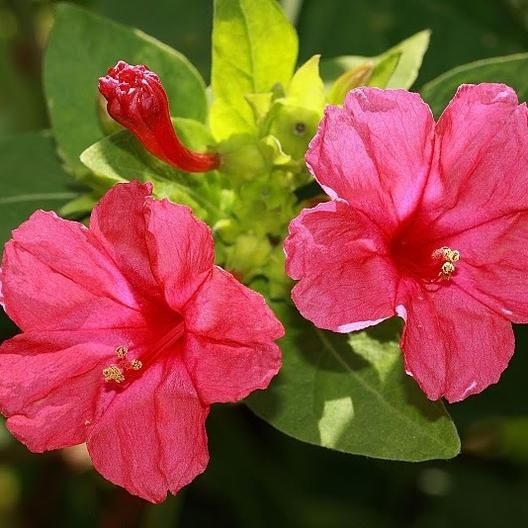
6. Moonflower
The moonflower, which is named after its evening blooming cycle, is a stunning perennial vine that adds a touch of magic to any moonlit garden. From the summer through fall season, these plants produce lightly scented, white flowers that remain open from dusk until midday.
Moonflowers, which are part of the Datura species, are both fragrant and exotic, with large, white trumpet-shaped flowers that unfurl at night and reflect the moon’s light. While many varieties of moonflower have an alluring lemon scent, they are poisonous and should be planted well away from areas where children and pets play.
As a climbing plant, the moonflower can reach impressive heights of up to 15 feet, particularly in its native tropical climate. To support the plant’s growth, attach it to a sturdy trellis or other structure where it can climb freely and display its beautiful blooms.
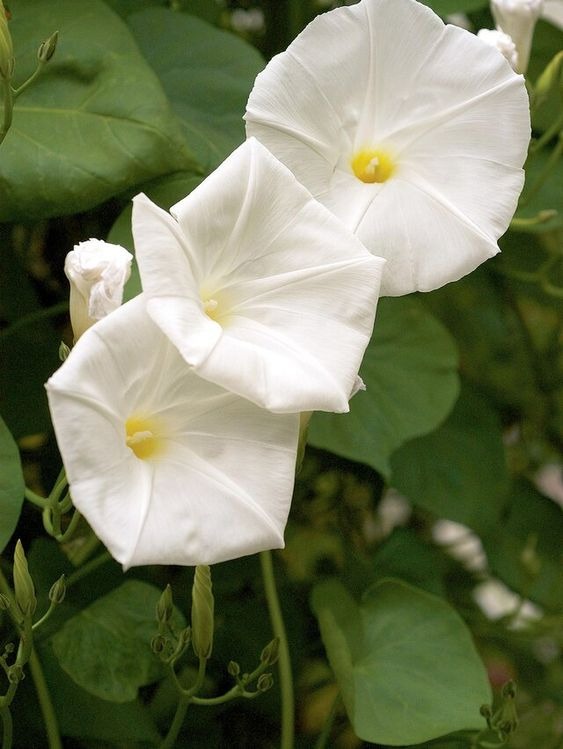
7. Foamflower
Foamflower, also known as Tiarella cordifolia, is a shade-loving perennial plant that can be a beautiful addition to a woodland garden or a walking path. It is low-maintenance and can easily grow from seed, producing blooming spikes of spidery flowers that add a touch of evening charm to your yard, and will come back year after year.
When planted along garden paths, the delicate racemes of tiny white flowers create a luminous path for night walks during spring evenings. The foamflower plant forms clumps that are one-to-two feet wide, and the flowers can reach up to twelve inches tall. It can also easily spread and make a good ground cover in your garden.
In the southern part of its range, this perennial plant has heart-shaped leaves that appear when it is flowering.

8. Mock Orange
The Philadelphus x virginalis, commonly known as mock orange, is a deciduous shrub that can grow up to 10 feet tall and wide, making it a great choice for creating a border hedge. The shrub produces stunning white flowers that have a delightful orange-like scent in late spring or early summer, depending on the location.
Mock orange is easy to care for and can thrive in full sun to partial shade, making it a versatile option for various outdoor spaces. After the flowers fade, the shrub’s dark green leaves remain throughout the growing season, adding a lush texture to the landscape. In the fall, the leaves turn a beautiful golden-yellow color, creating a stunning display before dropping off for winter.
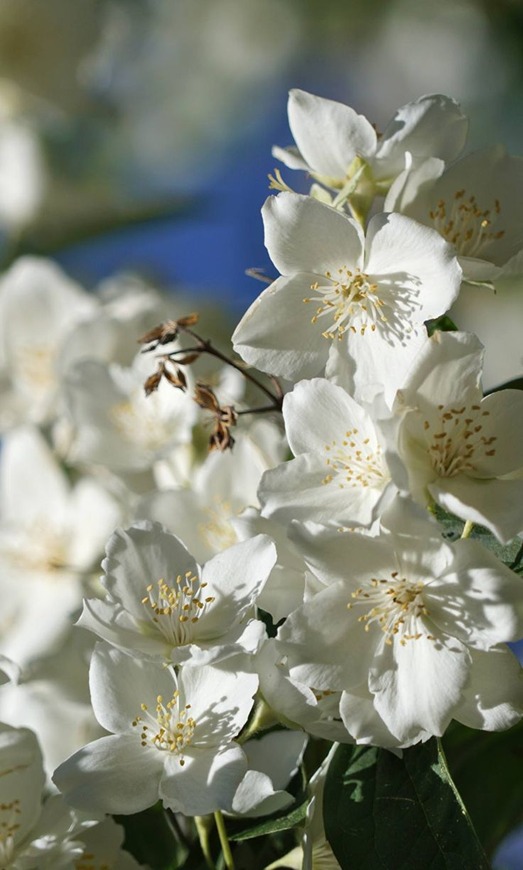
9. Night-blooming Jessamine
Cestrum nocturnum, commonly known as Night-blooming jasmine, is a sprawling shrub or small tree that produces a strong, sweet fragrance from its small, non-showy, white flowers. Despite its name, it is not actually a jasmine, but a member of the nightshade family. The dark, leathery-green leaves provide a stunning contrast to the delicate flowers.
This tropical plant is popular in warm climates and is best planted near porches, patios, or windows where its heavenly scent can be enjoyed during summer evenings. The tubular flowers open at night, attracting moths and other nighttime pollinators. Night-blooming jasmine can grow up to ten feet tall in ideal conditions, and it prefers full sun to partial shade.
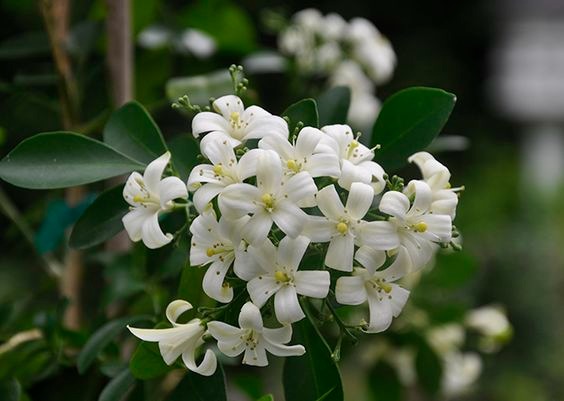
10. Angel’s Trumpet
Angel’s trumpet, also known as Brugmansia, is a tropical plant that produces large, trumpet-shaped flowers with a powerful fragrance that intensifies in the evening. This plant thrives in warm, humid climates and is best grown in zones 8 through 11, although it can be grown in colder regions if brought indoors for the winter.
Angel’s trumpet is available in a variety of colors, including peach, white, yellow, and pink. The plant can grow up to 20 feet tall, but is usually smaller when grown in containers. The flowers, which are typically six to 10 inches long, appear in clusters and bloom from early summer through fall in most areas. In warmer regions, angel’s trumpet can bloom year-round.
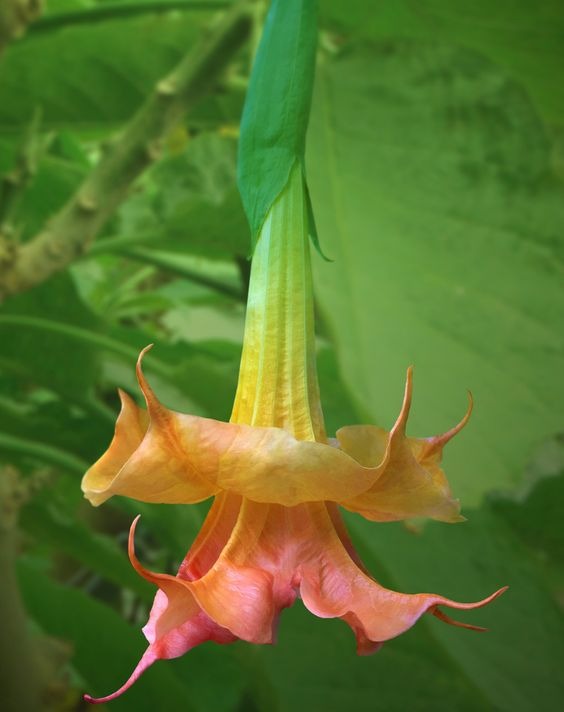
11. Nicotiana
Nicotiana, commonly called flowering tobacco, is a vibrant and eye-catching addition to any garden. Its colorful blooms come in shades of pink, red, white, and even pale green, making it an ideal choice for a moon garden.
One of the unique features of Nicotiana is that its small flowers open only at night, attracting hummingbird moths with their strong scent and providing a sweet nectar source for these pollinators.
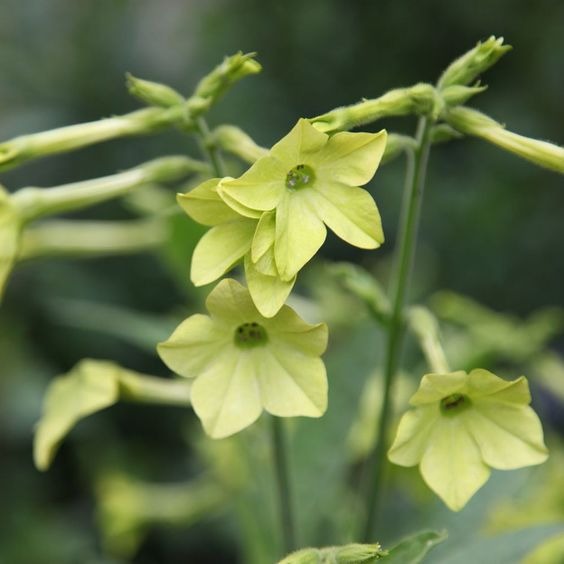
12. Night-blooming Cereus
Night-blooming Cereus is a cactus that commonly referred to as Queen of the Night, grows naturally in the Sonoran Desert in Arizona and is also suitable as a houseplant. This flowering plant is usually trained to climb up a trellis, producing large, white flowers that bloom at night after the plant is around 5 years old.
It is best suited for growing in the warm and humid conditions of zones 10 to 11. This plant requires indirect sunlight or shade and thrives under a tree. The soil should be a well-draining succulent or cactus mix, given its sensitivity to overwatering.
The fragrant blooms open fully around midnight and attract nocturnal pollinators such as moths. However, the flowers only last until sunrise, after which they wilt and die. If pollinated, the flowers give way to a sweet and edible fruit. Night-blooming Cereus is an excellent addition to a moonlit garden, adding a touch of exotic beauty to the landscape.

13. Night Phlox
Night phlox, scientifically known as Zaluzianskya capensis, is a charming addition to any moon garden. The plant is a semi-evergreen perennial that can grow up to 12 inches tall and wide. It takes about a year for the plant to reach its full height.
The small, star-shaped flowers of night phlox are red-backed and white in color, adding delicate florals to your moon garden. Though they bloom at night, night phlox grow best in full sun, when the flowers curl up tight. The plant prefers moist and well-drained soil and is perfect for flower beds, container gardens, rock gardens, and more. Night phlox is easy to grow and can tolerate drought, making it a great choice for low-maintenance gardens.
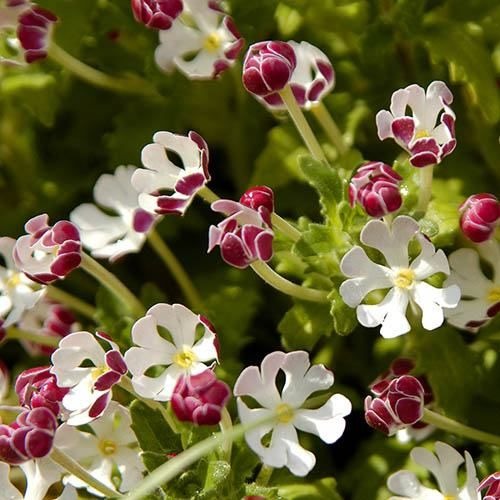
14. Night Gladiolus
Night gladiolus, also known as Gladiolus longicollis, belongs to the iris family and is known for their stunning, long-tubed flowers. These flowers are generally white or pale yellow, and may be uniformly colored or streaked with brown. Night gladiolus emits a sweet but spicy fragrance that smells like a combination of carnation and cloves.
Native to Southern Africa, night gladiolus can grow up to almost 2 feet tall. However, it should be noted that they are toxic if ingested, and may cause skin rash or irritation if they come in contact with skin. Night gladiolus is often grown as ornamental plants and can be seen in moon gardens, cottage gardens, and other garden designs that feature evening bloomers.
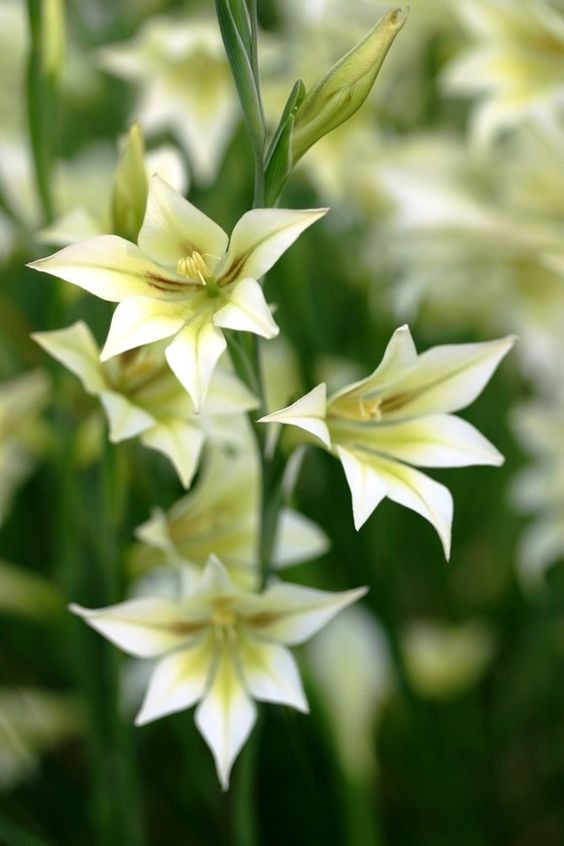
15. Chocolate Daisy
The name of this velvety-leaved perennial, Berlandiera lyrata, chocolate daisy, is no coincidence, as its blooms have a fragrance similar to chocolate, and their stamens taste like dark chocolate. Even though it’s commonly known as chocolate daisy, this plant belongs to the sunflower family, which is reflected in its bold yellow petals and burgundy center.
The chocolate daisy produces fragrant yellow flowers that bloom in the evening and provide a striking addition to borders and walkways. This perennial wildflower is native to southwestern North America and can thrive in hot, arid conditions.
These deer-resistant flowers grow up to 2 feet tall and bloom from April to November, preferring sunny or partially shaded areas with well-drained soil. During the day, they may droop due to the heat, but at night, they will unfurl into bright and cheerful blooms.
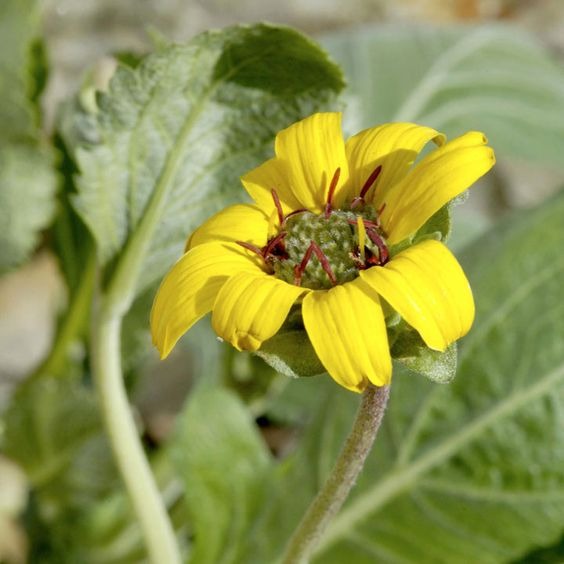
16. Garden Phlox
The garden phlox is a popular choice for moon gardens, with its striking snow-white color standing out in the darkness, pink, rose, red, lavender, purple and orange are also its colors. Its fragrant, tubular flowers, which are around one inch in size, can last from midsummer all the way through fall, providing plenty of time to enjoy them. This upright perennial typically grows in a clump that can reach two to four feet tall, making it a great addition to borders or as a background plant.
To keep the flowers blooming as long as possible, it’s recommended to deadhead them regularly, removing the spent blooms. This not only prolongs the blooming season but also helps to prevent the plant from setting seed and diverting energy away from producing new flowers.
For successful growth, the plant requires specific conditions that cater to its needs. The growing zones for this plant range from 3 to 8, making it ideal for gardens in these areas. It is essential to provide the plant with full sun to part shade, as it thrives in such conditions. Additionally, the soil must be rich, moist, organic, and well-draining, which provides the necessary nutrients for the plant to grow and flourish. Proper soil preparation before planting is crucial to ensure the plant’s healthy growth, and the addition of organic matter can significantly improve soil quality.
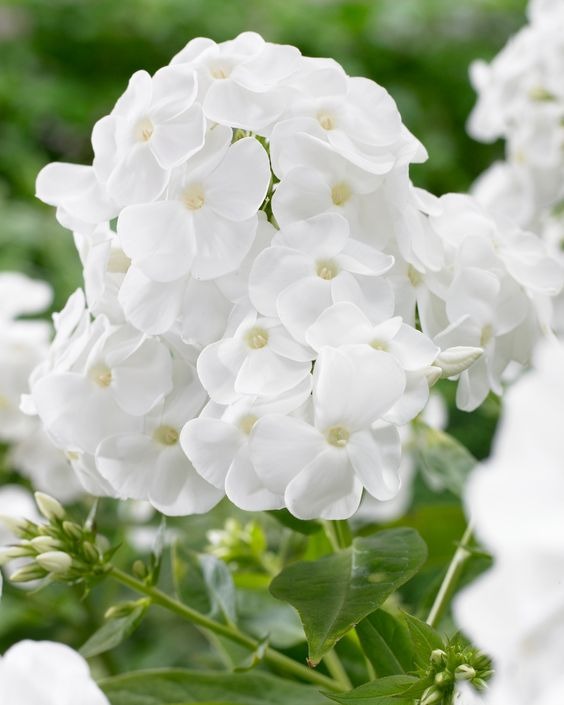
17. Jimsonweed
Jimsonweed, also known as thorn apple or angel trumpet, is a sprawling perennial with large, funnel-shaped white flowers that bloom in the evening from March through November, closing by noon the following day. The showy flowers of the jimsonweed are upright, distinguishing it from the similar-looking angel’s trumpet (Brugmansia).
This plant thrives in growing zones 8 to 12 and requires full sun to partial shade for optimal growth. It prefers sandy, well-draining soils to prevent waterlogging and root rot. This drought-tolerant plant can grow up to five feet tall and six feet wide, and is often used in xeriscapes. It belongs to the nightshade family and is native to North and South America. Jimsonweed contains toxic alkaloids, and should not be ingested.
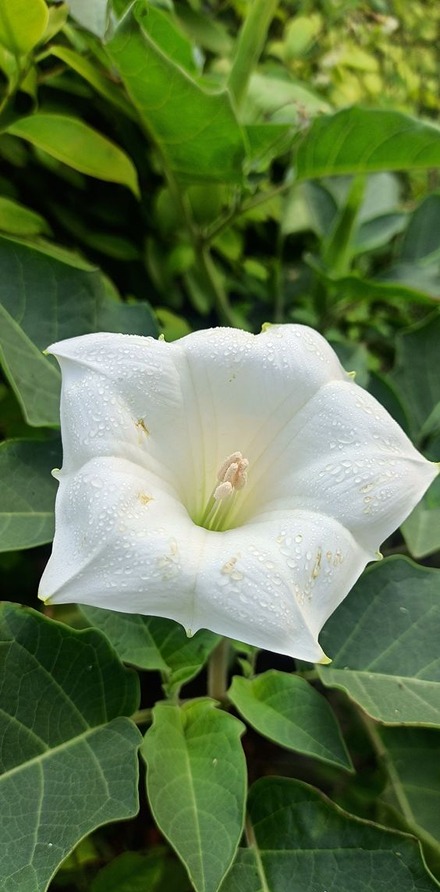
18. Colorado Four-O'clock
The Colorado, also known as desert four-o’clock, displays striking bright purple flowers that open during late afternoon and evening, from April to mid-September. This herbaceous perennial can grow up to two feet tall and six feet wide. It is adapted to thrive with natural rainfall only, even in the arid high deserts of the Southwest. The Colorado four-o’clock flourishes in sandy, well-drained soils, and prefers full sun exposure to develop its full potential.
For optimal growth, this plant prefers growing zones 5 to 10, and requires full sun to partial shade. It thrives in gravelly and sandy soils that are drought-tolerant, making it an ideal choice for xeriscapes or rock gardens.

19. Smooth Hydrangea
Smooth hydrangea, also known as Hydrangea arborescens, is a deciduous shrub that is native to the eastern United States. This plant produces clusters of small white flowers that are arranged in a flat-topped shape, which makes them stand out beautifully in the moonlight. Smooth hydrangea can grow up to three to five feet tall and wide, making it a great addition to any garden or landscape.
The following plant requires a slightly acidic soil to thrive and grow well. Known for its heart-shaped leaves and bell-shaped flowers, this plant grows in part shade and is adaptable to a wide range of growing conditions. The plant is hardy and can survive in zones 3 to 9, making it suitable for a wide range of climates. To ensure proper drainage and healthy growth, it’s recommended to plant it in well-draining soils.
To ensure that the smooth hydrangea produces flowers every year, it is important to prune it before the start of the spring blooming season. This is because the delicate flowers bloom only on new growth, which means that old branches should be trimmed away to encourage new growth. The smooth hydrangea is adaptable to different soil types and light conditions, but it prefers well-draining soil and partial to full sun exposure.
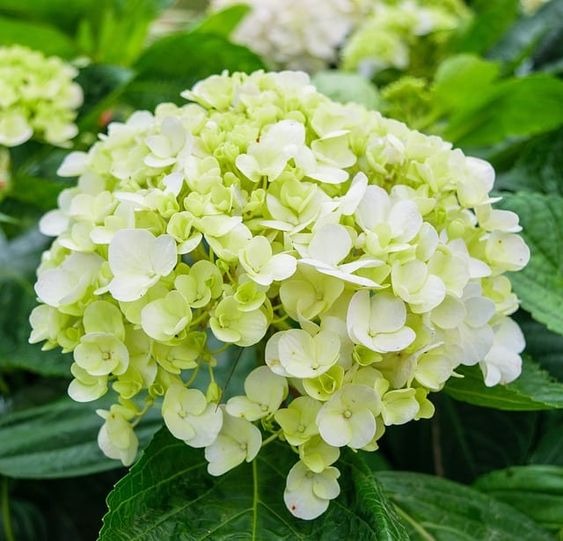
20. Ten-Petal Blazing Star
The ten-petal blazing star is a biennial perennial that can tolerate drought, and it produces a beautiful rosette of serrated rough leaves in its first year. In its second year, the plant grows long stems with large, pointed white buds that turn into four-inch, creamy white stars with ten petals and a golden starburst of anthers in the center.
For this plant, growing zones range from 3 to 9, and it requires full sun exposure. The plant thrives best in well-draining soil. These lightly fragrant flowers bloom from midsummer through fall, opening in the late afternoon or early evening and closing before morning.
The ten-petal blazing star typically grows to be two to four feet tall and prefers full sun to partial shade, as well as well-draining soil that is not too wet. It is native to the eastern and central United States and attracts a variety of pollinators, such as bees and butterflies.
